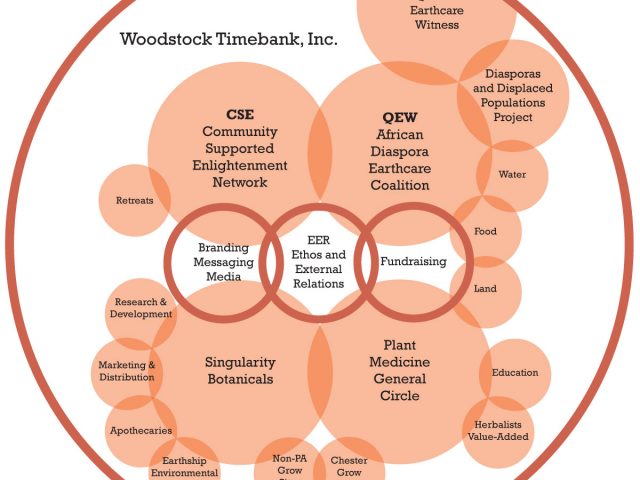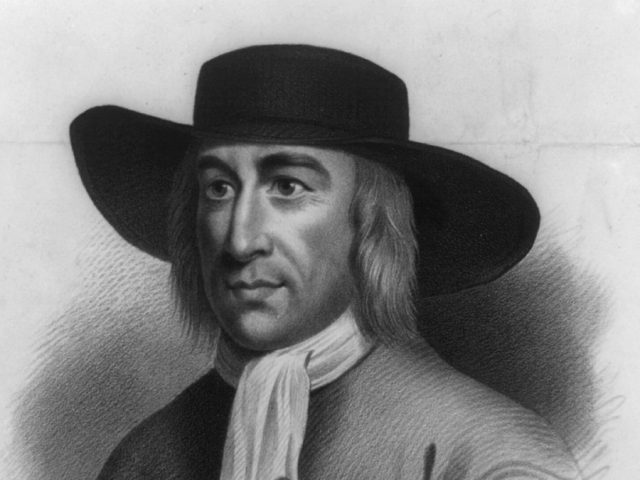By Pamela Boyce Simms “That’s good enough to try,” “It’s good enough for experimentation,” are phrases often heard in organizations that use sociocratic governance and decision-making. “Good enough” [after much …
 Biomimicry Climate Change Closed loop living systems CSE -- Community Supported Enlightenment Dynamic Governance Environmental resilience Evolutionary Culture-building Sociocracy
Biomimicry Climate Change Closed loop living systems CSE -- Community Supported Enlightenment Dynamic Governance Environmental resilience Evolutionary Culture-building SociocracySociocracy, Living Systems, & Emergent Organizational Design
 Evolutionary Culture-building spiritual deepening
Evolutionary Culture-building spiritual deepeningCommunity Self-selection & Glass Brimming over (GBS) Syndrome
Quaker Pathways Forward and Inner landscapes communities of practice participants have self-selected and sought out the practices. Enthusiastic practitioners are drawn to, or feel passionately compelled to dive into self-transformation …
 Brain function Buddhism Buddhist Practice Cognitive Restructuring digital physics Evolutionary Culture-building Mysticism Neural plasticity quantum mechanics Quantum science Self-guided Neural Plasticity social transformation
Brain function Buddhism Buddhist Practice Cognitive Restructuring digital physics Evolutionary Culture-building Mysticism Neural plasticity quantum mechanics Quantum science Self-guided Neural Plasticity social transformationInner Landscapes Activists’ Community-of-practice
_ _ _ _ _ _ _ _ _ _ _ _ _ _ _ _ _
____Activists attempt to move socio-political reality from point A, to an improved point B.
____Physicists create models of reality. Quantum mechanics and digital physics in particular have arrived at the same non-material understanding of reality as a probability distribution in which consciousness, not “bits” of matter, is the fundamental stuff of reality.
___Mystics tap into and experience a much wider swath of reality than most — including non-material reality.
____Contemplatives employ the practices and tools that facilitate arrival at a broad, mystical, exerience of reality.
____We are all now standing in the same space, sharing the same understanding and experience of reality. There is a confluence of wisdom and experience that activists, enabled by discoveries in physics, neuroscience, and using contemplative tools, are bringing to bear on their social transformation work from a wide-angle perspective and a vantage point of unprecedented clarity.
 Brain function Cognitive Restructuring contemplative practice Evolutionary Culture-building Neural plasticity Neurolinguistics Self-guided Neural Plasticity Visualization
Brain function Cognitive Restructuring contemplative practice Evolutionary Culture-building Neural plasticity Neurolinguistics Self-guided Neural Plasticity VisualizationNeuroscience Context for Practice I.
_ _ _ _ _ _ _ _ _ _ _ _ _ _ _ _ _
Mastery of our minds is essential to living in alignment with our highest, selves, i.e. with Love. Such mastery involves working intentionally, creatively, and consistently with our brains.
We can train our minds to change the physical structure and the function(s) of the brain. If we continually pay attention to, and purposefully direct our thought processes we can gain tremendous self-knowledge. Until we begin to consistently work with the dynamics of our longstanding habits, belief systems, points of reference, and patterns, these processes run us. The brain defaults to what is familiar, not necessarily to what is healthy and growth producing.
We can shape, reshape, and mold our malleable brains like modeling clay to deliberately foster optimal growth and transformation. The terrain of the brain stands at the ready. We just need to pick up the tools and work methodically.
 Brain function Buddhism Buddhist Practice Climate Change Cognitive Restructuring Evolutionary Culture-building Mysticism Neural plasticity Neurolinguistics Quaker Clearness Quantum science Self-guided Neural Plasticity spiritual deepening Visualization
Brain function Buddhism Buddhist Practice Climate Change Cognitive Restructuring Evolutionary Culture-building Mysticism Neural plasticity Neurolinguistics Quaker Clearness Quantum science Self-guided Neural Plasticity spiritual deepening VisualizationCommunity-of-Practice Democratizes “Esoteric” Quaker Mysticism
_ _ _ _ _ _ _ _ _ _ _ _ _ _ _ _ _
Quaker Friends speak of a state of “unity.” Mystics worldwide describe resting in and obtaining guidance from undifferentiated consciousness as the ultimate state of bliss.
The Quaker Pathways Forward community-of-practice takes the mystery [but not the awe] out of “mystical.” We usher the mystical experience out of the esoteric closets of the few by participating together in practices which democratize the opportunity for ALL interested Friends to co-create with spirit. The community-of-practice cultivates Friends’direct, frequent, and sustained experience of the light —the undifferentiated field.
A “Mystical experience” is where deep contemplative practice melds with reality as a probability distribution as explained by quantum science, digital physics, and neurobiology.
In community, Friends foster and hone ongoing, conscious alignment with universal intelligence lived daily, for their evolution, and that of society.
 Brain function contemplative practice Evolutionary Culture-building Neural plasticity social transformation spiritual deepening
Brain function contemplative practice Evolutionary Culture-building Neural plasticity social transformation spiritual deepeningRekindling the Fire of Fox: An Evolving Community-of-Practice
By, Pamela Boyce Simms
_ _ _ _ _ _ _ _ _ _ _ _ _ _ _ _ _
Accurate guidance comes only from within while in CONSCIOUS unity with the undifferentiated, quantum field of unified intelligence.
Community-of-practice group dynamic: Rekindling the Fire of Fox practices are incessantly evolving and emerge from community-of-practice participants’ direct personal experiences.
As practitioners record each practice and their experiences in writing, they integrate both brain function and subjective experience.
Writing our insights with a utensil other than a keyboard during small group sessions is, in and of itself part of a balancing, healing, awareness-expanding process.
 Buddhism Buddhist Practice Climate Change Engaged Buddhism Environmental resilience Evolutionary Culture-building Quaker Clearness Quaker Discernment Quaker Revitalization, Renewal & Revival spiritual deepening
Buddhism Buddhist Practice Climate Change Engaged Buddhism Environmental resilience Evolutionary Culture-building Quaker Clearness Quaker Discernment Quaker Revitalization, Renewal & Revival spiritual deepeningThe Fire of Fox in You
By Marisol Cortez
Cross-posted from Deceleration
_ _ _ _ _ _ _ _ _ _ _ _ _ _ _ _ _
We had gotten wind of this talk at a meeting on climate organizing in San Antonio, where we had picked up a flyer describing Boyce Simms as “an engaged Eco-Buddhist” who “works to transform anger and despair into compassion toward neighbors, communities, and the environment.” Given Deceleration‘s concern not just with questions of climate justice but with the affective (or inner/emotional) work required to sustain effective action in the face of mounting climate and social crises, we were intrigued.
 Buddhism Buddhist Practice Environmental resilience Evolutionary Culture-building Food production Relocalization Uncategorized Water access
Buddhism Buddhist Practice Environmental resilience Evolutionary Culture-building Food production Relocalization Uncategorized Water accessAncestor, What Did YOU Do at the Time of the Great Transition?
By Pamela Boyce Simms
Cross Posted from Resilience.org @ The Postcarbon Institute
_ _ _ _ _ _ _ _ _ _ _ _ _
Once upon a time, as climate change accelerated in the 21st century, the recognition that everyone was in the same boat with a hole at the bottom jolted some of your ancestors awake. Quaker, Buddhist, and Unitarian Universalist environmental activists quietly and methodically gathered an eclectic group of allies into an intentional circle that embraced marginalized populations, and scores of grassroots organizations throughout the African Diaspora.
 contemplative practice Evolutionary Culture-building Quaker Clearness Quaker Discernment Quakerism social transformation spiritual deepening
contemplative practice Evolutionary Culture-building Quaker Clearness Quaker Discernment Quakerism social transformation spiritual deepeningRekindling the Fire of Fox: Quaker Evolutionary Culture-building
By Pamela Boyce Simms
Quaker Pathways Forward -MINISTRY PREMISES
_ _ _ _ _ _ _ _ _ _ _ _ _ _ _ _
Global society faces an existential crisis.
Quakers have historically been a catalyst in American social transformation.
Many Friends have the capacity to tap into archival memory, the DNA of Quaker contemplative practice, and leadings therefrom to guide people through the narrow straights of climate change disruptions, economic upheaval and systems collapse.
The time has come again for Friends to stand in the epicenter of social transformation and model an evolutionary response to society’s multi-tiered, existential challenges.